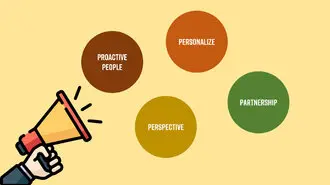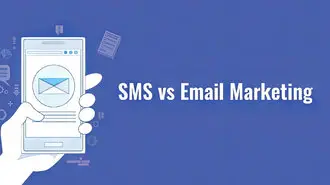Omnichannel digital marketing is all about providing a smooth, connected experience across different channels, like shops, websites, and more.
This approach uses many channels—like email, social media, apps, and in-store experiences—to engage customers at different points along their journey. The aim is to build a unified brand experience, making it easy for customers to interact with the brand, no matter which channel they choose.
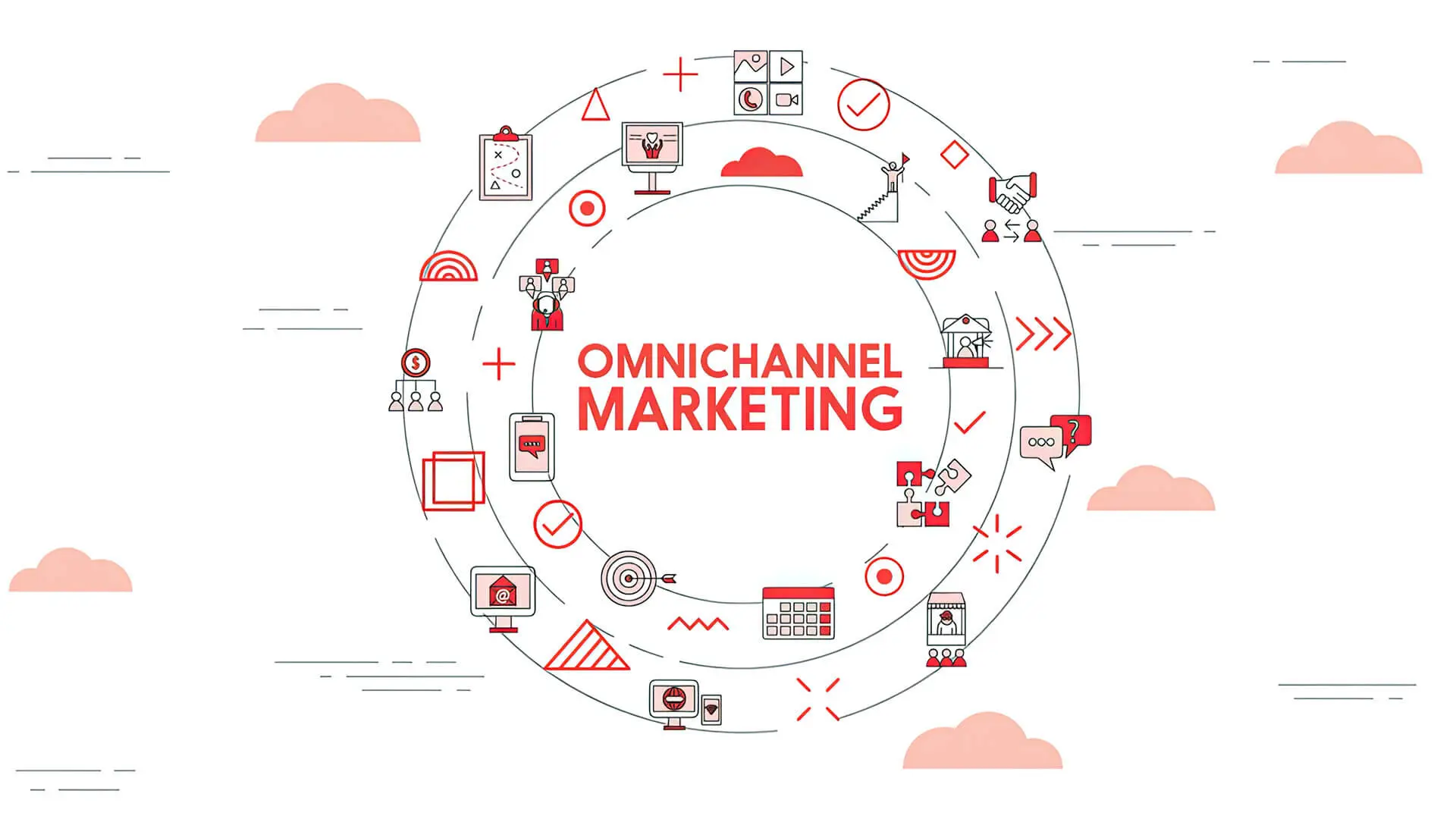
By creating a personalised, seamless omnichannel experience, businesses can foster customer loyalty and boost revenue. In today’s connected world, omnichannel marketing is essential for businesses of every size and industry.
Adequate customer support ensures businesses can meet demands and achieve goals through effective omnichannel strategies. Whether you’re a small business owner or a marketing professional, keep reading to see how omnichannel marketing can transform your business.
Want to receive updates? Sign up to our newsletter
Each time a new blog is posted, you’ll receive a notification, it’s really that simple.
What Is Omnichannel Marketing?
As explained above, omnichannel marketing amalgamates various online and offline touchpoints and processes like branding and messaging to enhance customer experience. It is a customer-focused approach acknowledging the multiple channels through which customers interact with the brand.
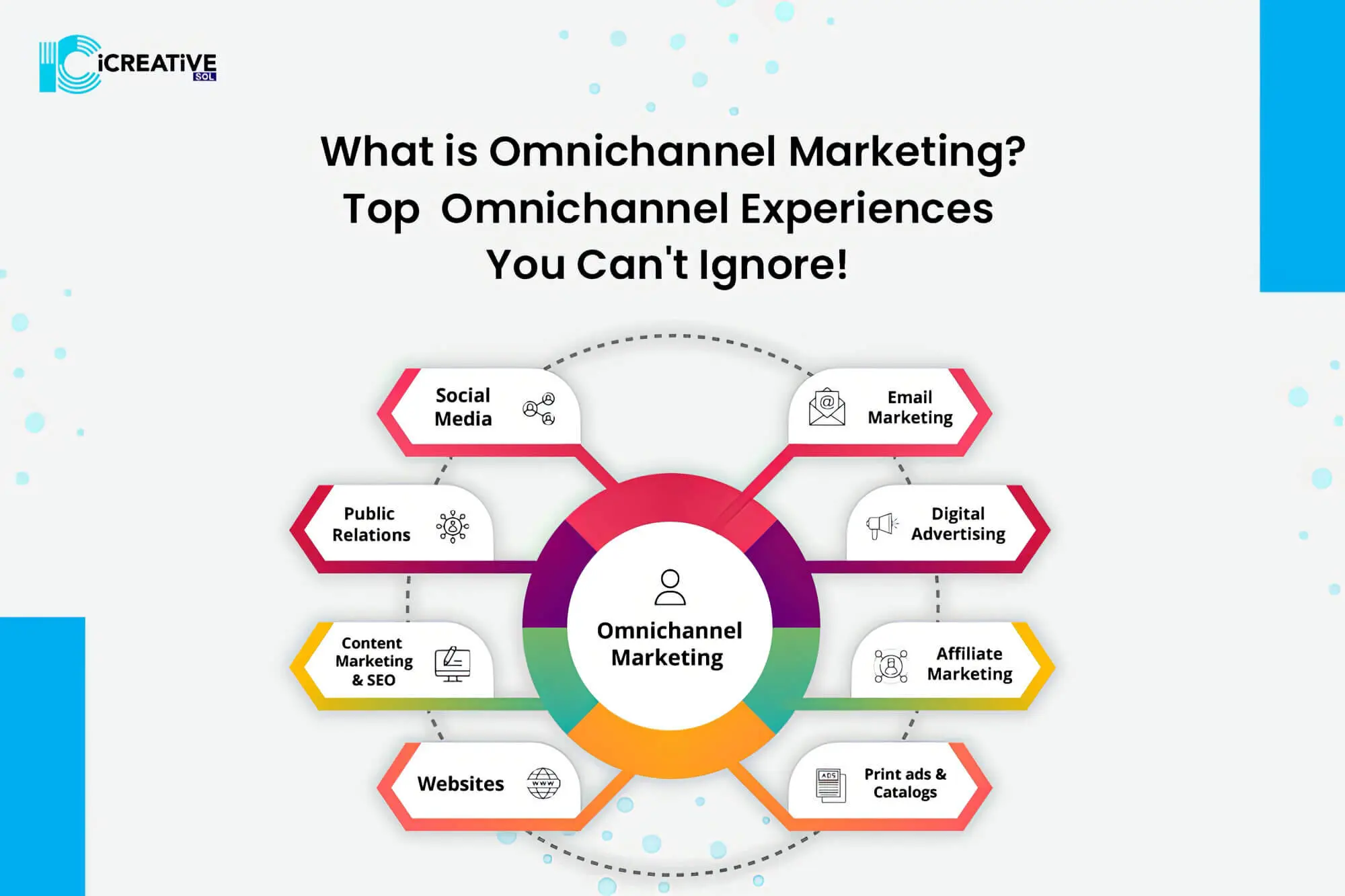
omnichannel marketing includes several essential components to ensure a positive and consistent experience across all channels. These include consistent messaging, maintaining a distinct brand voice and image, adapting to the customer journey stage, and more.
Omnichannel marketing boosts brand recognition and customer engagement by delivering a remarkable brand experience. This approach has even helped many brick-and-mortar stores stay afloat during the pandemic.

Advantages Of Omnichannel Marketing
Every customer’s inbox is overcrowded with personalised messages from different brands, so they’ve become picky when choosing one. So, even if you already have a large customer base, ensuring customer loyalty is complicated.
Almost every brand swears by omnichannel marketing, which ensures the best results. Although implementing a multichannel marketing strategy can be complex, it offers numerous advantages once mastered.
1. A Distinct Brand Identity
A seamless and successful omnichannel strategy ensures increased customer lifetime value and a cohesive brand voice and image so customers can instantly recognise your company. Accordingly, an organisation should create a brand image in accordance with the requirements and preferences of its target audience.
By prioritising the overall customer experiences and leveraging brand guidelines to cater to various channels, one can build a more comprehensive omnichannel strategy for greater customer loyalty and consistent messaging.
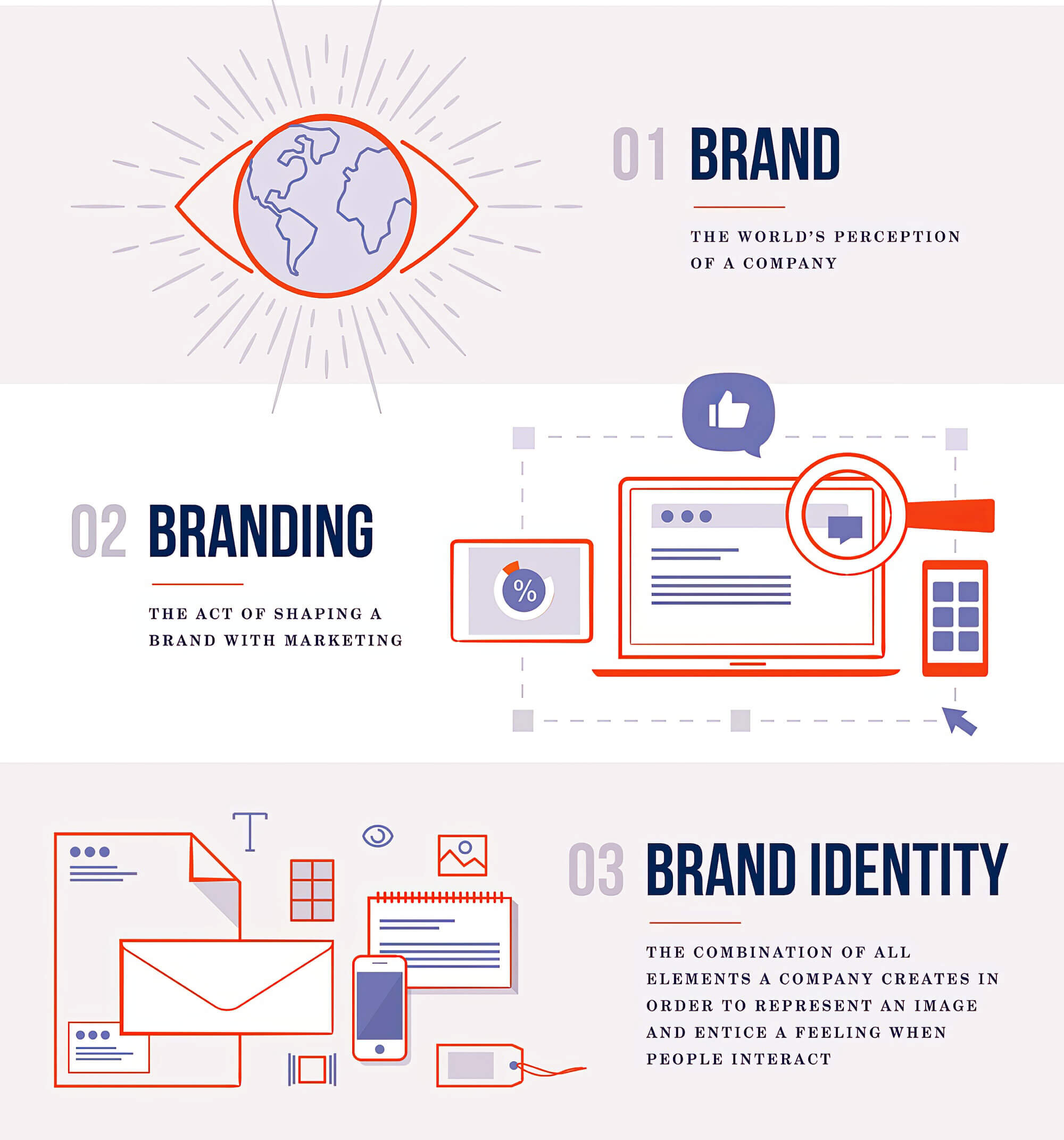
2. Improving Experience
A practical omnichannel strategy focuses on the customer journey across multiple marketing channels (both online and offline) instead of centralising on a single channel. As such, it puts the customer in the spotlight instead of the marketing platform, resulting in more sales and customer retention.
3. Better Attribution Data
To execute a fully omnichannel approach, utilising effective omnichannel marketing tools, such as customer relationship management and data analytics, is crucial to enhance the customer experience across all touchpoints.
Businesses comprehensively understand the buyer’s journey by monitoring customer interactions across various channels. This includes how consumers interact with your brand and which campaigns are the most effective.
Additionally, the data gathered can be employed to improve the effectiveness of future campaigns and optimise media spending.
4. Revenue Boost
An omnichannel approach motivates customers to engage both in-store and online across various platforms. By touching multiple points and channels, customer interaction is boosted. This increased engagement, whether via desktop or mobile device, translates to higher revenue.
A well-structured omnichannel campaign involves sending and personalising the right message for each customer. This increases the probability of customers making future purchases from the same brand in digital or brick-and-mortar locations.
And even if your brick-and-mortar store has just a handful of returning customers, they will constitute more of your total revenue. This is because they are easier to sell to, and they tend to spend more on your brand.
Key Elements Of A Successful Omnichannel Marketing
A profitable omnichannel marketing campaign focuses on how the customer engages with your brand. The emphasis is on the overall customer experience, and hence, you should consider the fundamental elements stated below:
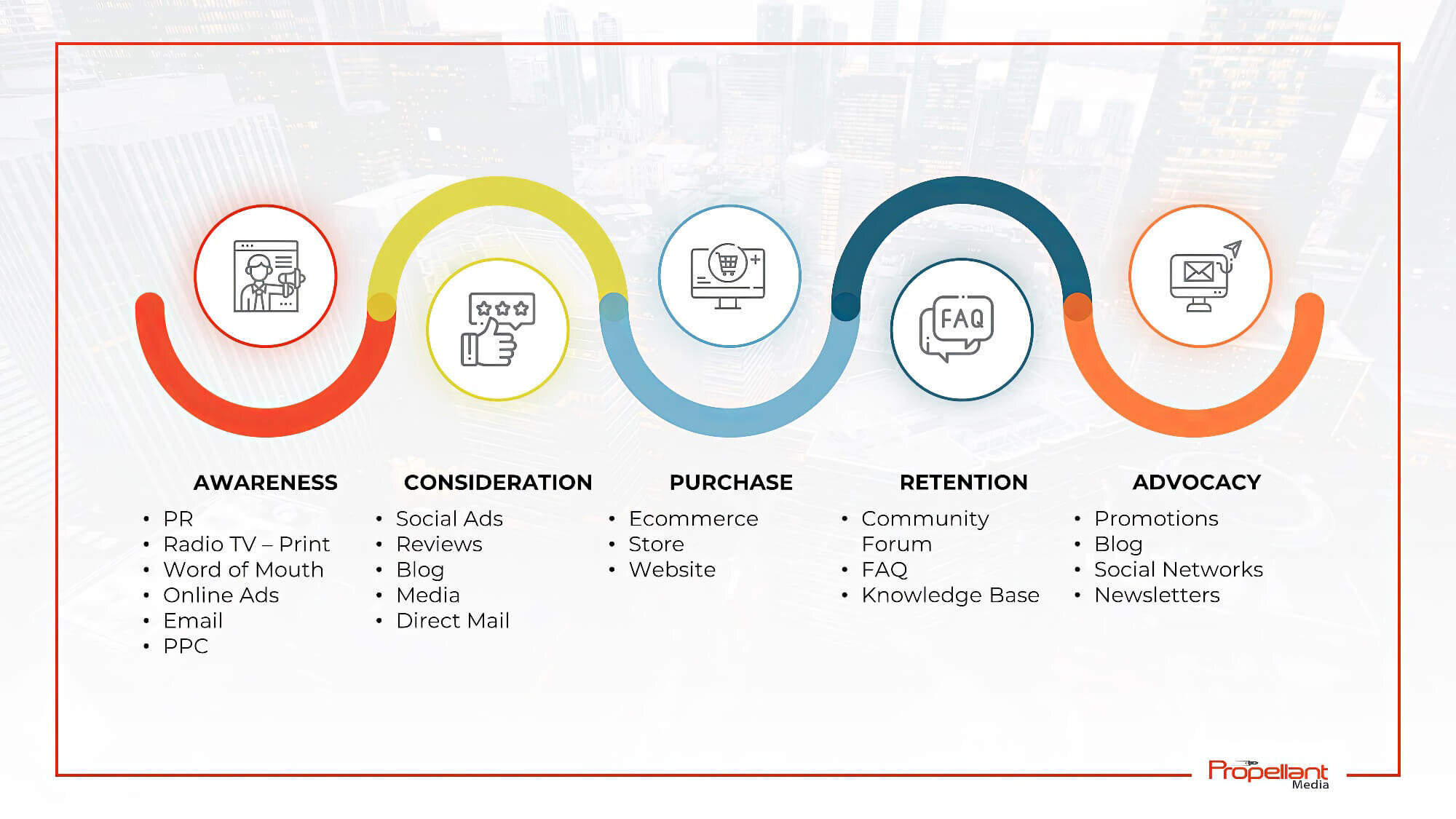
1. Data Collection
The first step to ensuring an omnichannel experience for your customers is collecting current and accurate data. This will help you analyse your desired audience better by recognising their likes and dislikes, purchasing tendencies, etc.
You can also gather your customer’s devices to interact with brands and purchase products/services. However, brands must employ the right tools to collect such data online and offline.
For instance, an attribution model like Unified Marketing Measurement (UMM) merges the person-level metrics of multi-touch attribution with the past overall measurements of media mix modelling. This enables touchpoints to be guided by individual preferences and past trends impacting engagement and conversions.
2. Data Analysis
Gathering data is just the start. Without a capable marketing platform and team to transform data into actionable insights, it’s worthless.
Hence, brands must use an analytics tool to analyse and interpret customer data rapidly. Accordingly, your marketing team can quickly adapt and adjust omnichannel campaigns to meet consumers’ immediate requirements.
3. Customer Journey Mapping
Despite coming in third on this list, drafting a customer journey map is best done before data collection. A customer journey map is a blueprint that examines the various stages between a customer discovering a brand and eventually making a purchase.
By creating these maps, brands can tailor their omnichannel campaigns more effectively as they consider individual interests, seamless user experience, economic factors, and more.

4. Personalisation While Following Brand Guidelines
Developing a brand image with well-defined creative and messaging guidelines is crucial for organisations. Adhering to these guidelines consistently across all channels can promote brand recognition and awareness through a unified message.
In addition, organisations can use brand tracking tools to gauge and forecast consumer perceptions of their brand. Accordingly, they can further enhance the omnichannel strategy.
This step is also where audience segmentation comes into play. The brand must divide its audience into various segments based on their interests, preferences, behaviours, etc. This allows more effective personalisation of the marketing channels, thereby meeting customer expectations.
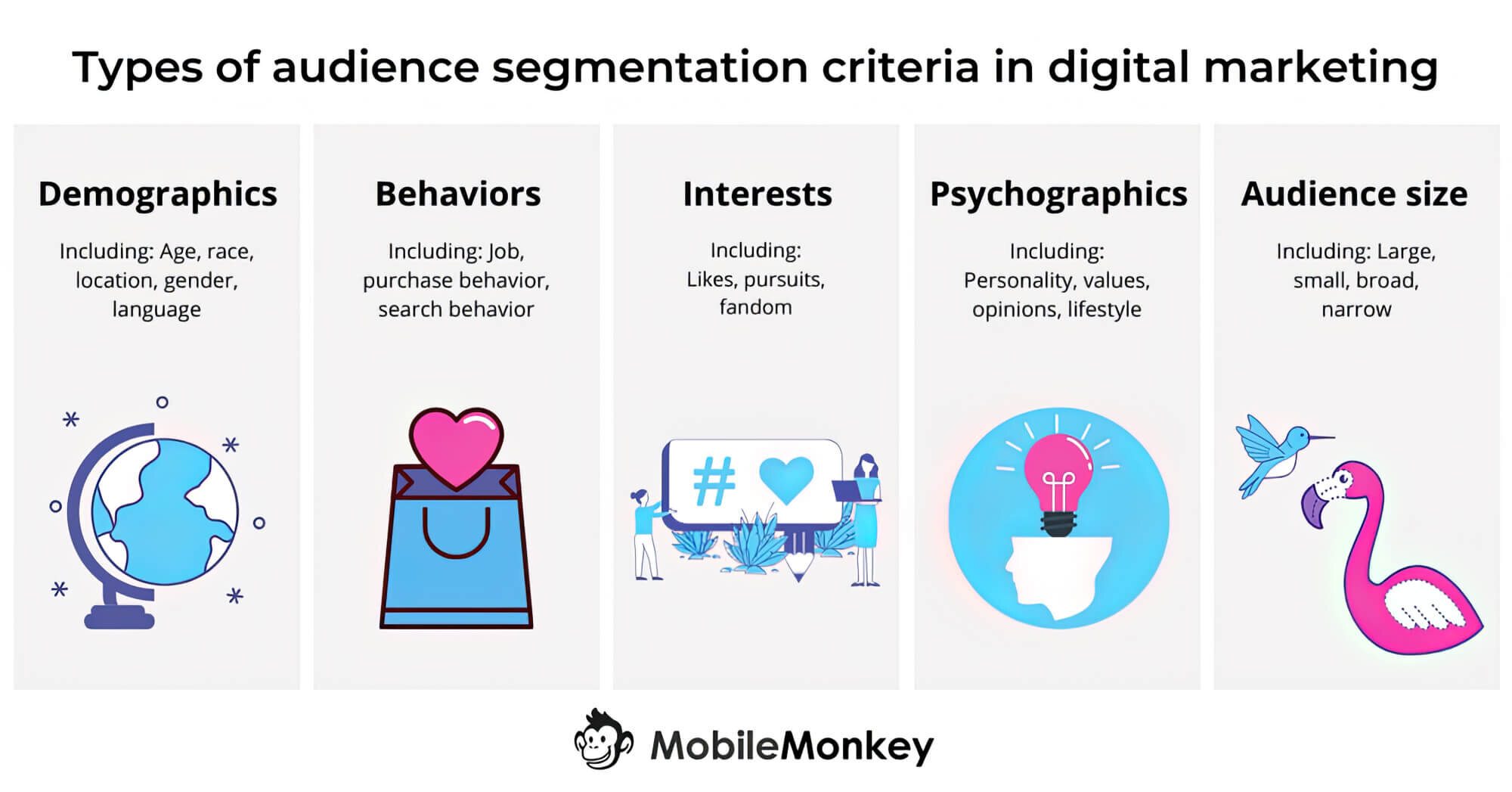
5. Optimisation
The last and perhaps the longest step (for it never ends) is to share and evaluate the effectiveness of omnichannel marketing techniques. Doing so is critical to identify the right time for improvement in messaging, campaign spending, and creative components.
Modern organisations should use media planning tools to generate “what-if” plans by considering multiple KPIs, budgets, and performance across social media platforms, media mix, target audience, etc. As a result, a detailed media plan can be created that maximises ROI, enhances future planning, and improves decision-making.
Examples Of Successful Omnichannel Marketing Campaigns
Given below are examples of omnichannel marketing that have proven successful and further illustrate how this approach takes customer engagement to the next level:
1. Sephora
Sephora, a beauty retailer, focuses on creating a table of contents and personalised omnichannel experiences for its customers. The company achieves this through in-app messaging, personalised push notifications, and simple methods for better customer in-person consultations.
Furthermore, its in-store technology supports employees in accessing customer preferences and extending their product knowledge by suggesting suitable products. Sephora’s loyalty programme also plays a significant role in this strategy.
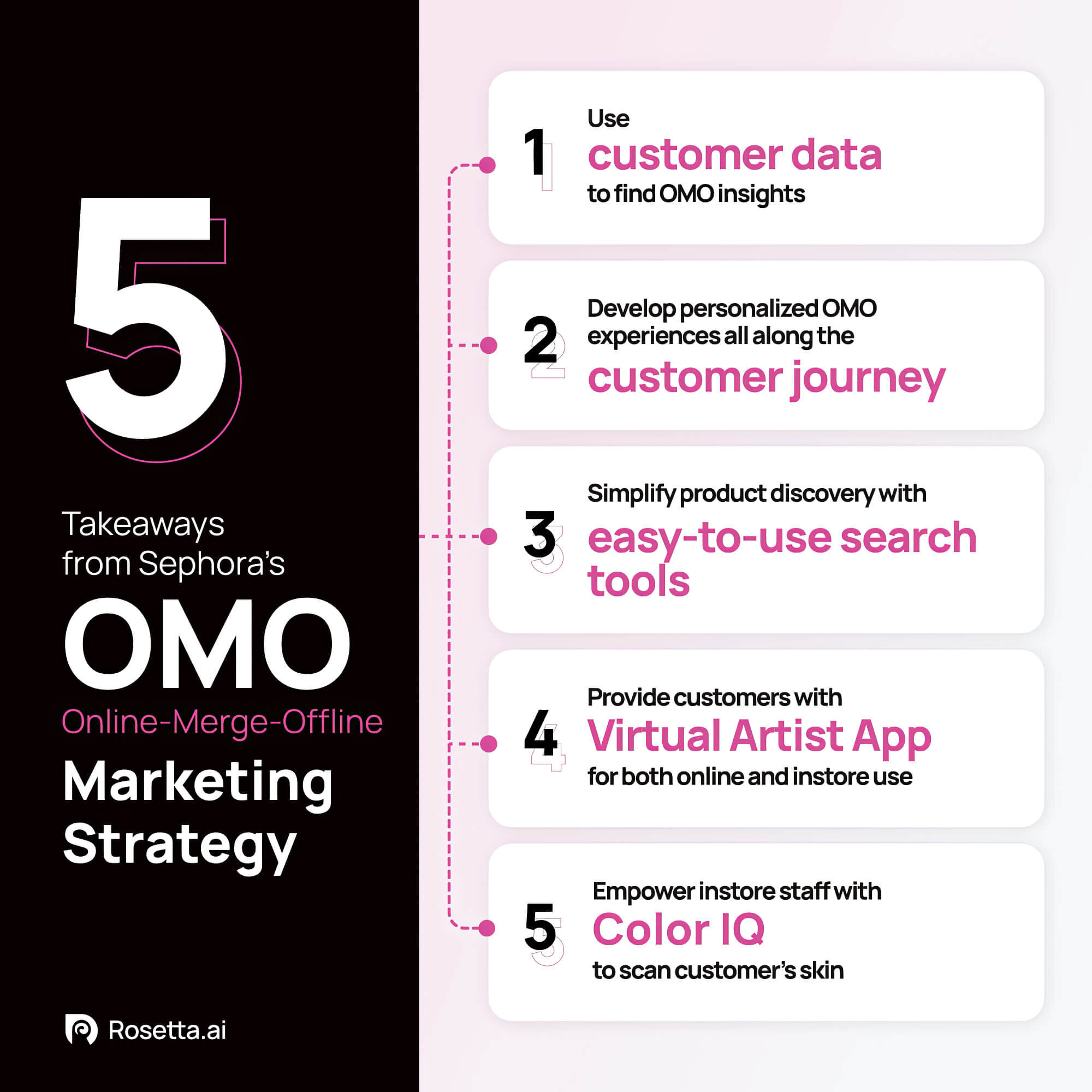
2. Starbucks
Starbucks has developed a mobile rewards app that prioritises consumer convenience by seamlessly integrating mobile and in-store experiences.
The app lets customers conveniently reload their Starbucks cards from their laptops or phones, enhancing the online shopping experience. By using the mobile app for payments, they can earn points to redeem a free coffee in the future, skip the queue during rush hours by placing an order beforehand, enhance their interaction with the physical store, and more.

3. Nike
Nike has adopted an ecosystem approach to omnichannel marketing, expanding the brand experience and providing customers with an increasingly comprehensive platform of deals, community engagement, and content.
For example, Nike’s SNKRS and Run Club apps enable in-person meetups, running groups, and events. The brand also boasts an app that delivers personalised workout routines and fitness programmes. By doing so, Nike creates experiences beyond their shoe and apparel offerings and caters to customers’ daily routines.

4. Disney
Disney has become the world’s most powerful brand, surpassing Lego, due to the success of its movies and its use of “big data” to deliver exceptional customer service.
Disney’s MyMagic platform, which centres on the MagicBand device, has streamlined visitors’ experiences at Walt Disney World. The wristbands feature RFID technology, allowing them to be used as hotel room keys, FastPasses for rides, park tickets, payment options, etc.
This provides visitors with convenience and Disney with insights into their behaviour, preferences, and purchases. So, you see, it’s a win-win situation for both Disney and its customers!
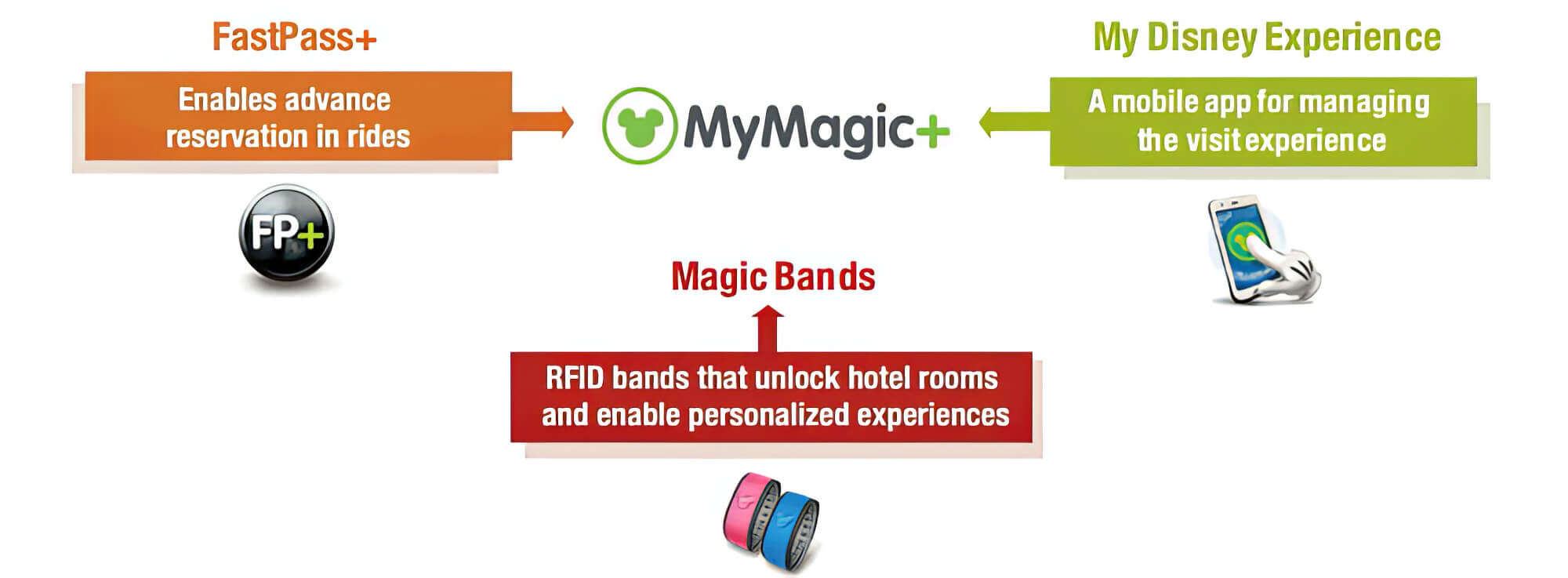
5. Kmart Australia
Kmart is a retail company that operates throughout Australia, and it has improved its shopping online experience by creating a mobile application. This app streamlines operations, allowing Kmart’s Australian customers to purchase online items through their mobile devices and pay-in store.
The app includes a “Pay-in-store” option, allowing customers to reserve online items. They can even finalise transactions using any payment method at physical Kmart stores, from cash to cards.
Consequently, this feature has bridged the gap between online and offline shopping, contributing significantly to Kmart’s expansion.

6. Apple
Apple became one of the torch-bearers of omnichannel marketing once it introduced devices that communicate seamlessly with each other using iCloud accounts. This implied that Apple users could seamlessly exchange messages with contacts across various devices, like the iPhone, iPad, etc., and access all the information via one iCloud account.
As a result, Apple’s omnichannel approach sets an example for retailers by ensuring that customers don’t have to repeat information, thereby saving their valuable time and effort.
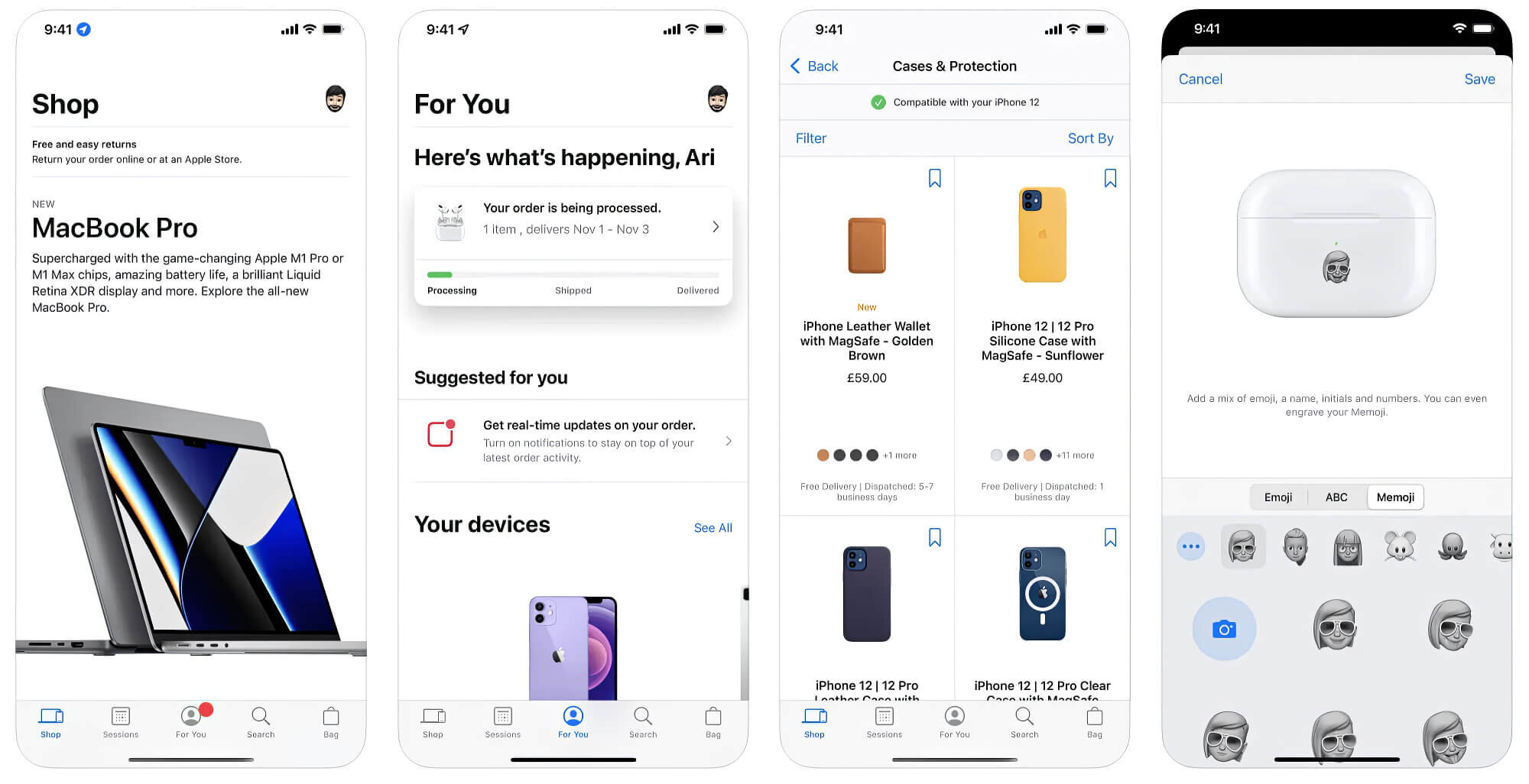
7. Singapore Airlines
Aviation companies are not far behind in reaping the benefits of omnichannel marketing, and Singapore Airlines is a prime example. The airline offers a seamless experience for the customer and has a reputation for innovation, and rightly so. It has partnered with AOE-integrated airports and shopping malls to blend online and offline experiences.
This partnership allows customers to conveniently take advantage of in-flight options, pre-book services, shop, and earn loyalty points.

8. Amazon Prime
Amazon, with its competitive delivery fees, aims to be the world’s most customer-centric company. Its focus on creating a positive and unique customer experience provides valuable lessons. One example is the Amazon single customer account, which enables users to access all of Amazon’s services through a single account. This includes purchasing products, browsing for movies, using AWS services, etc.

9. Google
One cannot end any discussion about marketing without mentioning Google, the leader in major digital marketing trends. With its widely used search engine, Google collects relevant customer data and delivers targeted ads based on search queries and browsing history.
Google Ads further allows businesses to create relevant ads for Google search result pages and Google’s network of partner websites and mobile apps. Even the world’s largest video-sharing platform, YouTube, is owned by Google. Businesses can target users through YouTube based on their viewing history and demographic information to improve your omnichannel marketing.

10. IKEA
The Swedish furniture chain has emerged as a global leader in omnichannel marketing strategies for home furnishing and decor retailers. The company has gradually integrated its physical products with its extensive online catalogue, which is now fully integrated with its website and mobile application.
The brand’s popular AR (augmented reality) apps have contributed to its success and provided valuable lessons for business owners. As a result, IKEA’s performance has increased significantly.

Challenges Of Implementing An Omnichannel Marketing Strategy And How To Overcome Them
1. Inefficient Utilisation Of Customer Data
An effective omnichannel marketing strategy requires businesses to collect and manage customer data from offline and online channels. This process is undoubtedly complex, as different channels may use different formats and systems.
Users interacting with a brand tend to leave/submit information like email addresses, contact numbers, etc. However, most data becomes outdated as people move and change locations, rendering the collected data useless.
This further leads to a lack of coordination among the teams managing different channels, leading to disparate systems and outdated data. Overall, this hinders the ability of the brand to leverage customer data effectively.
But all is not lost if you comprehensively understand your customers and prospects. As such, it’s essential to identify and rectify insufficient, replicated, and outdated data to avoid wasting your marketing efforts.
Moving on, you must ensure that all the information you gather about the user is integrated into a single system accessible by both your sales and marketing teams. This will allow sales teams to collaborate and provide personalised offers to customers.
2. No Action On New Findings
A survey conducted by the CMO Council and RedPoint Global indicated that marketers struggle to take advantage of their existing data to enhance experiences. Although 42% of marketers have employed more than ten solutions in data, marketing, etc., only 3% are confident about their data and systems being cohesively connected.
This is concerning because this data can provide valuable insights into customer behaviour and preferences. Failure to act on this data could result in an ineffective marketing approach.
That’s when one can address this issue by hiring technical professionals to optimise the available technology and customer data. These insights can help to develop a more effective omnichannel marketing strategy.
3. Not Identifying The Right KPIs
Omnichannel strategies can only become fruitful if marketers maintain consistency in all four stages: Awareness, engagement, conversion, and delight. Despite measuring overall campaign effectiveness, marketers often overlook measuring Key Performance Indicators (KPIs) at each stage of the buyer’s journey. This gap prevents them from gaining meaningful insights into each stage and hinders efforts to improve the customer experience.

Hence, instead of measuring overall campaign results, marketers should measure KPIs for every stage in their customer journeys. For instance, analysing unique visitors during the awareness stage or visit duration during engagement can determine user interest in your product. These insights can create appropriate personalised messages for prospects and customers.
4. Ineffective Marketing Strategy
Although marketers realise the effectiveness of devising omnichannel marketing, many struggle to develop effective strategies. This results in a disconnected experience.
To address this issue, marketers should prioritise the customer and place them at the centre of their strategy. Identifying the various touchpoints in the customer journey, utilising technology, and adopting a data-driven approach are essential for creating an effective strategy. Continuously testing campaigns is also crucial in acquiring and retaining customers, Ultimately enhancing the brand presence and the overall effectiveness of the omnichannel marketing approach.
5. Isolated Analytics Measurement
In a research paper on the marketing strategy, Glen Cook discusses the difficulties of evaluating stores’ performance that support digital sales. According to Cook, traditional metrics like profit, turnover, and sales may not accurately reflect a store’s performance, as the data might not turn profitability in the omnichannel context. Instead, the store’s value should be measured based on its contribution to the sales process.
Cook suggests that isolating different touchpoints for evaluation will not provide a complete view of the strategy’s effectiveness, as the boundaries between online and offline channels become blurred. So, to obtain a comprehensive understanding of the progress, it is necessary to view all touchpoints as part of a larger ecosystem and analyse them from a top-down perspective.
By doing so, one can identify which channels performed well and which ones need improvement, allowing for the effective realisation of loopholes and overall campaign performance improvement.
6. Improper Content Strategy
The success of an omnichannel strategy largely depends on the quality of its content. A poorly executed content strategy can lead to campaign failure. With customers using various mediums, such as social media, websites, and mobile applications, a “spray and pray” approach to content creation may be irrelevant to specific segments of users.
As such, a brand must identify the touchpoints customers use to interact with the brand and create content that aligns with their personas and needs. For instance, when you find an interesting reel on Instagram, you feel tempted to tap on the creator’s profile and check out more of their work. You may even sign up for their product/service. Similarly, relevant content highly increases the likelihood of purchase, subscription, etc.
7. Failure In Implementation
According to a study by Yes Lifecycle Marketing, coordinating campaigns across multiple channels is challenging for two-thirds of marketing executives at large companies. The study cites silos and organisational structure as primary reasons for implementation failure, with the addition of new channels like mobile apps and social media further complicating the process.
So, we recommend shifting the focus from channels to customer experiences. This involves understanding the buyer’s persona and segmenting them to deliver the right message to the right user through the right channel. By doing so, implementing campaigns across various channels can be more effective and efficient.
The Power Of Omnichannel Marketing
So, omnichannel marketing is a customer-centric approach that leverages multiple channels to create a seamless consumer experience. By integrating online and offline channels, businesses can provide customers with a consistent brand experience while building across all touchpoints. This results in increased customer satisfaction, loyalty, and retention.
In this article, we have discussed the key elements of omnichannel marketing, including the importance of data collection and analysis, personalisation, and continuous optimisation. We have also discussed the benefits of an omnichannel experience, such as more sales, customer loyalty, and higher engagement.
As such, by adopting an omnichannel approach, businesses can meet their customer’s evolving needs and preferences while gaining a competitive advantage in the market.
Discover the limitless possibilities for your marketing strategy by engaging with our team at sitecentre®. Our experienced professionals are ready to assist you in creating a bespoke omnichannel approach perfectly aligned with your brands identity and target market, all while driving growth and ensuring a seamless customer experience.
Take the leap towards marketing excellence today! Contact us to embark on your omnichannel journey.
FAQs
1. How is omnichannel marketing different from multichannel marketing?
Omnichannel and multichannel marketing both use multiple marketing channels to reach the customer. However, there are some critical differences between the two.
Multichannel marketing involves a variety of channels to communicate with customers, such as email, social media, print, and television ads. The focus is on making the brand’s message available across various channels. While this approach offers customers multiple ways to interact with a brand, each channel operates in a silo with little integration.
However, omnichannel marketing presents vast opportunities by creating a seamless, integrated, consistent customer experience across all channels. In an omnichannel marketing strategy, the various channels are connected and work together to create a seamless integration, resulting in a cohesive omnichannel customer experience.
For example, a customer might start browsing for a product on their phone, continue on their laptop, and complete the purchase in a brick-and-mortar location. Operating within an omnichannel environment ensures that the customer’s experience is consistent across every channel, connected across all touchpoints and that each channel complements and enhances the others.
So, while multichannel marketing focuses on making the company’s message available on all channels, omnichannel marketing takes a more integrated approach and streamlines the buying journey.
2. How can a business implement an effective strategy?
In the previous sections, we discussed the key elements of a successful omnichannel strategy and omnichannel marketing examples for better understanding. So, here’s a brief rundown of the steps you must undertake to ensure the effectiveness of your marketing campaign:
1. Understand Your Customers
Start by researching your customers’ preferences and behaviour across different channels. This will help you determine which channels to focus on and how to personalise each customer’s experience.
2. Connect Your Channels
Considering the difference between multichannel and omnichannel marketing, you obviously wouldn’t want to display your brand message haphazardly. Hence, make sure all your channels are connected and working in symbiosis. This might involve integrating your website, social media, email marketing, mobile app, and physical locations.
3. Personalise The Experience
Use data and insights to personalise the experience across all channels. Consider using customer data to personalise email marketing messages or offer customised recommendations based on a customer’s shopping history.
4. Use The Right Technology And Tools
Leverage technology to manage and track customer interactions across all channels. This might include using a customer relationship management (CRM) system and other marketing automation tools that help you streamline the customer journey.
5. Measure Your Success
Monitor your progress across all channels to understand how well your omnichannel marketing strategy works. Use data to identify areas for improvement and make changes as needed.
6. Adapt And Evolve
Trends come and go, and your customer needs and preferences will change accordingly. So, it is imperative to adapt and evolve your strategy continuously. As such, omnichannel marketing is an ongoing process that adapts as customers shop.
By following these steps, businesses can create a personalised and seamless experience for their customers across all channels, leading to increased engagement, loyalty, and sales.



